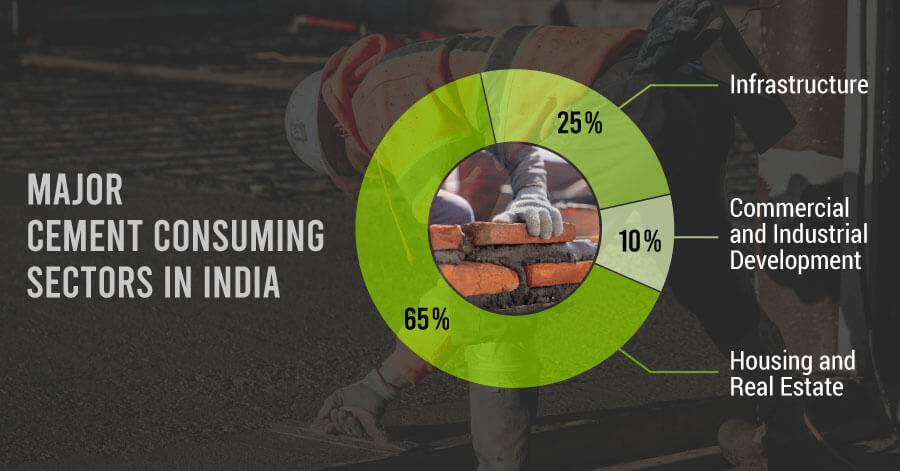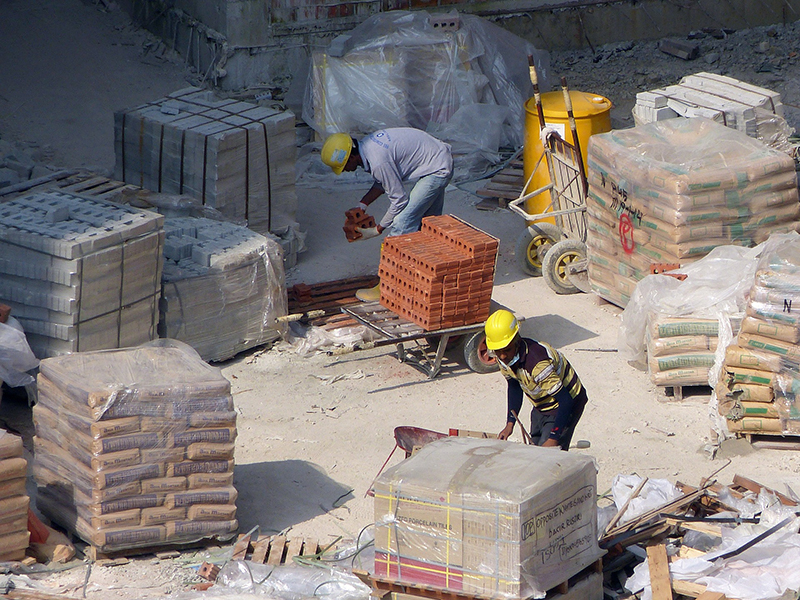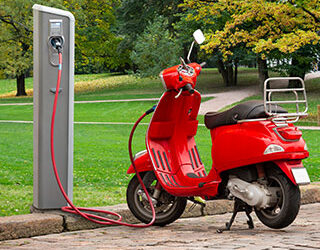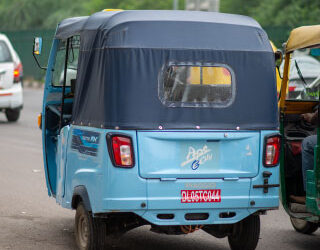Emission Reduction Approaches for the Cement Industry

Inside the Cement Industry: Challenges and Solutions
India’s journey towards becoming a robust economy is largely dependent on the growth of its industrial sector, with cement being the most produced commodity in it. In India, the major cement consuming sectors include: housing and real estate (65%), infrastructure (25%), and commercial and industrial development (10%).

In 2018-2019, India had an annual cement consumption of 337 million tons and this is expected to increase up to 550 million tons by 2025. This increase is attributed to various developmental schemes launched by the Indian Government including the Smart City Mission, Housing for All, Bharatmala Pariyojana, Pradhan Mantri Gram Sadak Yojana, Urban Transport Metro Rail Projects, etc. Aided by suitable government foreign policies, several foreign players such as Lafarge-Holcim, Heidelberg Cement, and Vicat have invested in the country in the recent past. The per-capita consumption of cement in India is 240 kg, which is well below the global consumption of 530 kg (DIPP, 2020). This signifies that there is a huge economic opportunity to cater to the unmet demand in future.
This rising demand for cement also associates with it the environment damaging greenhouse gas (GHG) emissions. The cement industry alone is responsible for 8% of the total national emissions. These emissions are a product of electricity usage, combustion of fossil fuel (coal, gas etc. for energy use), and the conversion process of limestone into lime (process emissions), which accounts for 13%, 31%, and 56% respectively. The CO2 emission intensity of the Indian cement industry in 2018 was 576 kg CO2/ton of cement produced whereas the global average is 634 kgCO2/ton of cement produced.
Average “specific thermal energy consumption” and Average “specific electrical energy consumption” in the Indian cement industry is 3.1 GJ/tonne of clinker and 80 kWh/tonne of cement, respectively, which is far less than the global average of 3.5 GJ/tonne of clinker and 91 kWh/tonne of cement, respectively. Despite this noteworthy progress by the Indian cement industry in enhancing energy efficiency, GHG emissions from the cement sector are still significantly high (187 million tons of CO2e in 2015-16). This makes the industry a hard-to-abate industrial sector as only energy use related emissions gets minimised through energy efficiency measures, but the process related emissions (having highest contribution) do not get impacted. The International Energy Agency (IEA), Cement Sustainability Initiative (CSI), and World Business Council for Sustainable Development (WBCSD), identifies various carbon emission reduction levers and estimates their decarbonisation potential under the 2-degree scenario (2DS).
 As per the IEA and WBCSD report, emerging and innovative technologies like carbon capture & storage (CCS), renewable energy technologies, and others have 48% emission reduction potential but they are not widely used in the Indian cement industry due to several reasons. The uptake of renewable energy technology depends on various factors like land requirement, electricity prices in that location, initial investment required, etc. Similarly, for carbon capture and storage the techno-economic feasibility is needed as its deployment will add to the cost of cement production. The advanced technologies for carbon capture in the cement industry are at the demonstration level (TRL 7 & 8); TRL is a measure to define the maturity of a technology.
As per the IEA and WBCSD report, emerging and innovative technologies like carbon capture & storage (CCS), renewable energy technologies, and others have 48% emission reduction potential but they are not widely used in the Indian cement industry due to several reasons. The uptake of renewable energy technology depends on various factors like land requirement, electricity prices in that location, initial investment required, etc. Similarly, for carbon capture and storage the techno-economic feasibility is needed as its deployment will add to the cost of cement production. The advanced technologies for carbon capture in the cement industry are at the demonstration level (TRL 7 & 8); TRL is a measure to define the maturity of a technology.
Reduction in the clinker to cement ratio has the second-highest emission reduction potential (37%). This is being considered as a high priority now, as not only this reduces direct thermal emissions but also the process emissions, which contribute highly in the overall emissions from the cement industry and cannot be addressed through energy efficiency (EE) measures. There has been some progress in terms of identifying new alternate materials with lower clinker content and therefore holds a bigger responsibility for India in the near future.
Alternate fuels and EE have a CO2 reduction potential of 12% and 3% respectively, which is very less as compared to the other two options. In recent years, the Indian cement industry has started using alternative fuels to further cut down emissions. The amount of alternative fuel used by the cement industry is defined by Thermal Substitution Rate (TSR), which refers to the percentage of alternative fuel used to replace fossil fuels. From the TSR level of 4% in 2016 (was 0.6% in 2010), the Indian cement industry targets to achieve 25% TSR by 2025 and 30% by 2030. On the other hand, regarding the EE lever, most of the energy-efficient technologies are already implemented in the cement industry, leaving very little potential for decarbonisation of the cement industry by this lever. Additionally, to realise the leftover potential in EE, various interventions like waste heat recovery, uptake of high energy efficient coolers, grinding systems, and the use of variable frequency drive (VFD) in process fans can also be taken up.
On one hand, cement is the most used industrial commodity required for development, but on the other hand it is also responsible for high GHG emissions. Therefore, there is a need to create a balance between the nation’s growth and environment sustainability. Moreover, to achieve climate change mitigation targets, in-line with the Paris Agreement, which attempts to limit the global temperature increase by 2°C at the end of this century, there is an urgent need to explore other opportunities (beyond energy efficiency) to limit GHG emissions from India’s cement industry. In recent years, a lot of research and development has taken place to develop low carbon cement alternatives like LC3, geopolymer binders, belite rich cements, and other novel cements. Out of these options, LC3 and Geopolymer concrete have significant potential for emission reduction and are in the final stages of development in India. Further, with the use of circular economy principals (like use of SCMs, utilisation of construction and demolition waste through technologies like “SmartCrusher”) and design optimisation techniques (like bubble deck/voided concrete slab systems, confined masonry, and use of timber) the demand of cement can be optimised in the upcoming construction activities. However, to enable this transition there is a need for all stakeholders to come together and take up activities, including pilots, policy interventions as well as raising the awareness of these options to reduce emissions from this hard to abate sector.
This blog is written by Shirish Bhardwaj (Research Associate, Industrial Energy Efficiency), with inputs from Deepak Tewari and Bhaskar Natarajan
Shirish is a young professional working in the field of Industrial Energy Efficiency. His area of research includes industry decarbonization, resource efficiency, low carbon alternative materials, etc. He holds a master’s degree in Renewable Energy Engineering and Management and a bachelor’s degree in Mechanical Engineering.




